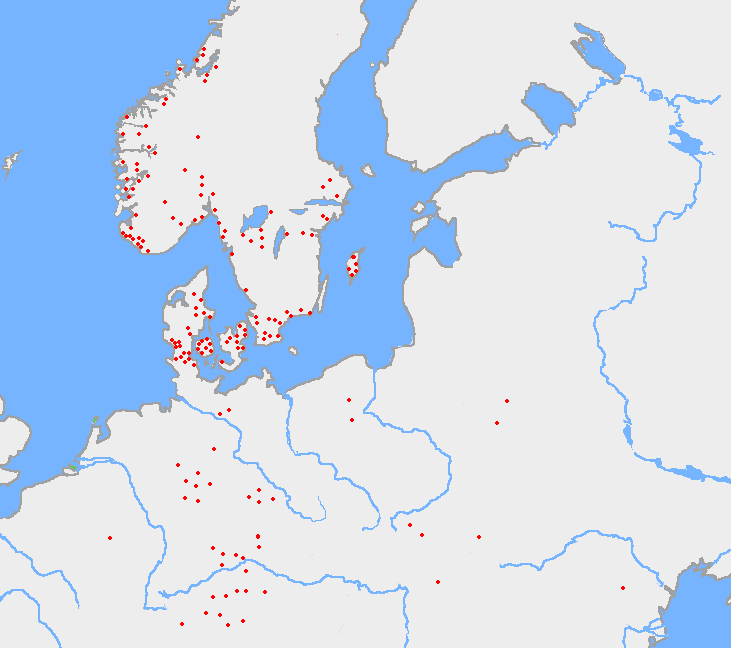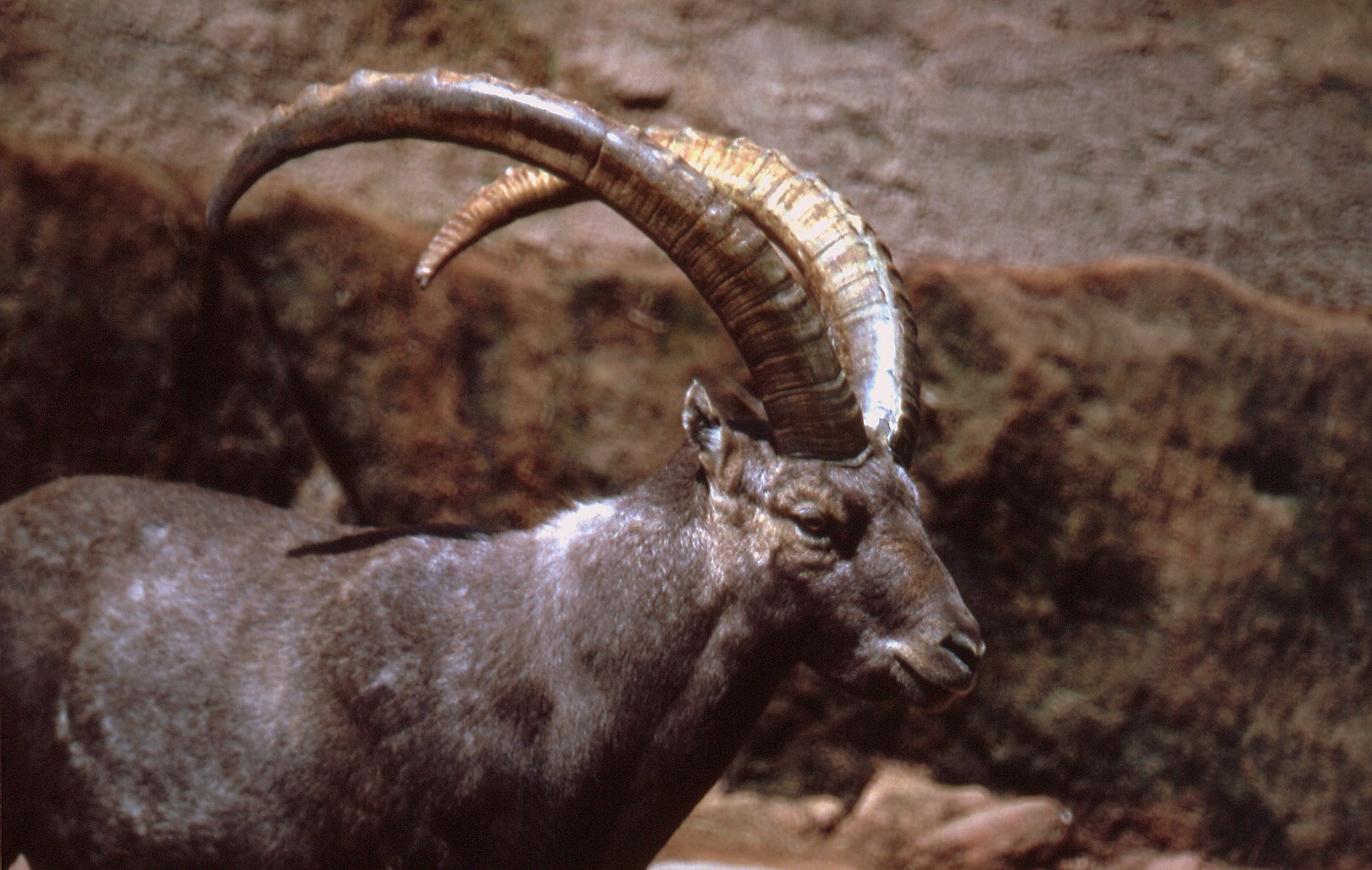|
Capreolus
''Capreolus'' is a genus of deer, the roe deer. Etymology English ''roe'' is from Old English ''ra'' or ''rá'', from ''raha'', from Proto-Germanic , cognate to Old Norse ''ra'', Old Saxon ''reho'', Middle Dutch and Dutch ''ree'', Old High German ''reh'', German ''Reh''. It is perhaps ultimately derived from a PIE root ''*rei-'', meaning "streaked, spotted or striped". The word is attested on the 5th-century Caistor-by-Norwich astragalus -a roe deer talus bone, written in Elder Futhark as , transliterated as ''raïhan''. In the English language this animal was originally simply called a 'roe', but over time the word 'roe' has become a qualifier and the creature is now usually called a 'roe deer'. The Koiné Greek name ''πύγαργος'', transliterated ' pygargos', mentioned in the Septuagint and the works of various writers such as Hesychius, Herodotus and later Pliny, was originally thought to refer to this species (in many European translations of the Bible), alth ... [...More Info...] [...Related Items...] OR: [Wikipedia] [Google] [Baidu] |
Siberian Roe Deer
The Siberian roe deer, eastern roe deer, or Asian roe deer (''Capreolus pygargus''), is a species of roe deer found in northeastern Asia. In addition to Siberia and Mongolia, it is found in Kazakhstan, the Tian Shan Mountains of Kyrgyzstan, eastern Tibet, the Korean Peninsula and forested regions of northern China. Its specific name ', literally "white-rumped", is shared by the pygarg, an antelope known in antiquity. The name was chosen by the German biologist Peter Simon Pallas in the late 18th century. The Siberian roe deer has long antlers. Taxonomy The Siberian roe deer was once considered to be the same species as the European roe deer (''Capreolus capreolus''), but it is now considered to be a separate species. The two subspecies of the Siberian roe deer are ''C. p. pygargus'' and ''C. p. tianschanicus'' (the latter is named for the Tian Shan mountains). Description The Siberian roe deer is a medium-sized metacarpalian deer, with a long neck and large ears. It is typ ... [...More Info...] [...Related Items...] OR: [Wikipedia] [Google] [Baidu] |
Elder Futhark
The Elder Futhark (or Fuþark, ), also known as the Older Futhark, Old Futhark, or Germanic Futhark, is the oldest form of the runic alphabets. It was a writing system used by Germanic peoples for Northwest Germanic dialects in the Migration Period. Inscriptions are found on artifacts including jewelry, amulets, plateware, tools, and weapons, as well as runestones, from the 2nd to the 8th centuries. In Scandinavia, beginning in the late 8th century, the script was simplified to the Younger Futhark, while the Anglo-Saxons and Frisians instead extended it, giving rise to the Anglo-Saxon runes, Anglo-Saxon futhorc. Both the Anglo-Saxon futhorc and the Younger Futhark remained in use during the Early Middle Ages, Early and the High Middle Ages respectively, but knowledge of how to read the Elder Futhark was forgotten until 1865, when it was deciphered by Norwegian scholar Sophus Bugge. Description The Elder Futhark is named after the initial phoneme of the first six rune names: /f/ ... [...More Info...] [...Related Items...] OR: [Wikipedia] [Google] [Baidu] |
Chamois
The chamois (; ) (''Rupicapra rupicapra'') or Alpine chamois is a species of Caprinae, goat-antelope native to the mountains in Southern Europe, from the Pyrenees, the Alps, the Apennines, the Dinarides, the Tatra Mountains, Tatra to the Carpathian Mountains, the Balkan Mountains, the Rila–Rhodope Mountains, Rhodope massif, Pindus, the northeastern mountains of Turkey, and the Caucasus. It has also been introduced to the South Island of New Zealand. Some subspecies of chamois are strictly protected in the EU under the European Habitats Directive. Description The chamois is a very small bovid. A fully grown chamois reaches a height of and measures . Males, which weigh , are slightly larger than females, which weigh . Both males and females have short, straightish horns which are hooked backwards near the tip, the horn of the male being thicker. In summer, the fur has a rich brown colour which turns to a light grey in winter. Distinct characteristics are white contrasting ... [...More Info...] [...Related Items...] OR: [Wikipedia] [Google] [Baidu] |
Ibex
An ibex ( : ibex, ibexes or ibices) is any of several species of wild goat (genus ''Capra''), distinguished by the male's large recurved horns, which are transversely ridged in front. Ibex are found in Eurasia, North Africa and East Africa. Taxonomy The name ''ibex'' comes from Latin, borrowed from Iberian or Aquitanian, akin to Old Spanish ''bezerro'', 'bull', modern Spanish ''becerro'', 'yearling'. Ranging in height from and weighing for males, ibex can live up to 20 years. Three closely related varieties of goats found in the wild are not usually called ibex: the markhor, western tur, and eastern tur. A male ibex is referred to as a buck, a female is a doe, and young juveniles are called kids. An ibex buck is commonly larger and heavier than a doe. The most noticeable difference between the sexes is the larger size of a buck's horns. The doe grows a pair of smaller, thinner horns which develop considerably more slowly than those of a buck. The ibex's horns appear at ... [...More Info...] [...Related Items...] OR: [Wikipedia] [Google] [Baidu] |
Latin Language
Latin ( or ) is a classical language belonging to the Italic languages, Italic branch of the Indo-European languages. Latin was originally spoken by the Latins (Italic tribe), Latins in Latium (now known as Lazio), the lower Tiber area around Rome, Italy. Through the expansion of the Roman Republic, it became the dominant language in the Italian Peninsula and subsequently throughout the Roman Empire. It has greatly influenced many languages, Latin influence in English, including English, having contributed List of Latin words with English derivatives, many words to the English lexicon, particularly after the Christianity in Anglo-Saxon England, Christianization of the Anglo-Saxons and the Norman Conquest. Latin Root (linguistics), roots appear frequently in the technical vocabulary used by fields such as theology, List of Latin and Greek words commonly used in systematic names, the sciences, List of medical roots, suffixes and prefixes, medicine, and List of Latin legal terms ... [...More Info...] [...Related Items...] OR: [Wikipedia] [Google] [Baidu] |
Addax
The addax (''Addax nasomaculatus''), also known as the white antelope and the screwhorn antelope, is an antelope native to the Sahara Desert. The only member of the genus ''Addax'', it was first described scientifically by Henri de Blainville in 1816. As suggested by its alternative name, the pale antelope has long, spiral horns – typically in females and in males. Males stand from at the shoulder, with females at . They are sexually dimorphic, as the females are smaller than the males. The colour of the coat depends on the season – in the winter, it is greyish-brown with white hindquarters and legs, and long, brown hair on the head, neck, and shoulders; in the summer, the coat turns almost completely white or sandy blonde. The addax mainly eats grasses and leaves of any available shrubs, leguminous herbs and bushes. They are well-adapted to exist in their desert habitat, as they can live without water for long periods of time. Addax form herds of five to 20 members, ... [...More Info...] [...Related Items...] OR: [Wikipedia] [Google] [Baidu] |
Lexicon Universale
The ''Lexicon Universale'' of 1698 is an early modern humanist encyclopedia in Latin by Johann Jacob Hofmann of Basel Basel ( ; ), also known as Basle ( ), ; ; ; . is a city in northwestern Switzerland on the river Rhine (at the transition from the High Rhine, High to the Upper Rhine). Basel is Switzerland's List of cities in Switzerland, third-most-populo ... (1635–1706). It appeared in four volumes with 1,000 pages each. :''Lexicon Universale, Historiam Sacram Et Profanam Omnis aevi, omniumque Gentium; Chronologiam Ad Haec Usque Tempora; Geographiam Et Veteris Et Novi Orbis; Principum Per Omnes Terras Familiarum ..Genealogiam; Tum Mythologiam, Ritus, Caerimonias, Omnemque Veterum Antiquitatem .. Virorum ..Celebrium Enarrationem .. Praeterea Animalium, Plantarum, Metallorum, Lapidum, Gemmarum, Nomina, Naturas, Vires Explanans. - Editio Absolutissima ..Auctior .. - Leiden: Jacob. Hackius, Cornel. Boutesteyn, Petr. Vander Aa, & Jord. Luchtmans, 1698.'' External l ... [...More Info...] [...Related Items...] OR: [Wikipedia] [Google] [Baidu] |
Pliny The Elder
Gaius Plinius Secundus (AD 23/24 79), known in English as Pliny the Elder ( ), was a Roman Empire, Roman author, Natural history, naturalist, and naval and army commander of the early Roman Empire, and a friend of the Roman emperor, emperor Vespasian. He wrote the encyclopedic (''Natural History''), a comprehensive thirty-seven-volume work covering a vast array of topics on human knowledge and the natural world, which became an editorial model for encyclopedias. He spent most of his spare time studying, writing, and investigating natural and geographic phenomena in the field. Among Pliny's greatest works was the twenty-volume ''Bella Germaniae'' ("The History of the German Wars"), which is Lost literary work, no longer extant. ''Bella Germaniae'', which began where Aufidius Bassus' ''Libri Belli Germanici'' ("The War with the Germans") left off, was used as a source by other prominent Roman historians, including Plutarch, Tacitus, and Suetonius. Tacitus may have used ''Bella Ger ... [...More Info...] [...Related Items...] OR: [Wikipedia] [Google] [Baidu] |
Herodotus
Herodotus (; BC) was a Greek historian and geographer from the Greek city of Halicarnassus (now Bodrum, Turkey), under Persian control in the 5th century BC, and a later citizen of Thurii in modern Calabria, Italy. He wrote the '' Histories'', a detailed account of the Greco-Persian Wars, among other subjects such as the rise of the Achaemenid dynasty of Cyrus. He has been described as " The Father of History", a title conferred on him by the ancient Roman orator Cicero, and the " Father of Lies" by others. The ''Histories'' primarily cover the lives of prominent kings and famous battles such as Marathon, Thermopylae, Artemisium, Salamis, Plataea, and Mycale. His work deviates from the main topics to provide a cultural, ethnographical, geographical, and historiographical background that forms an essential part of the narrative and provides readers with a wellspring of additional information. Herodotus was criticized in his times for his inclusion of "legends an ... [...More Info...] [...Related Items...] OR: [Wikipedia] [Google] [Baidu] |






